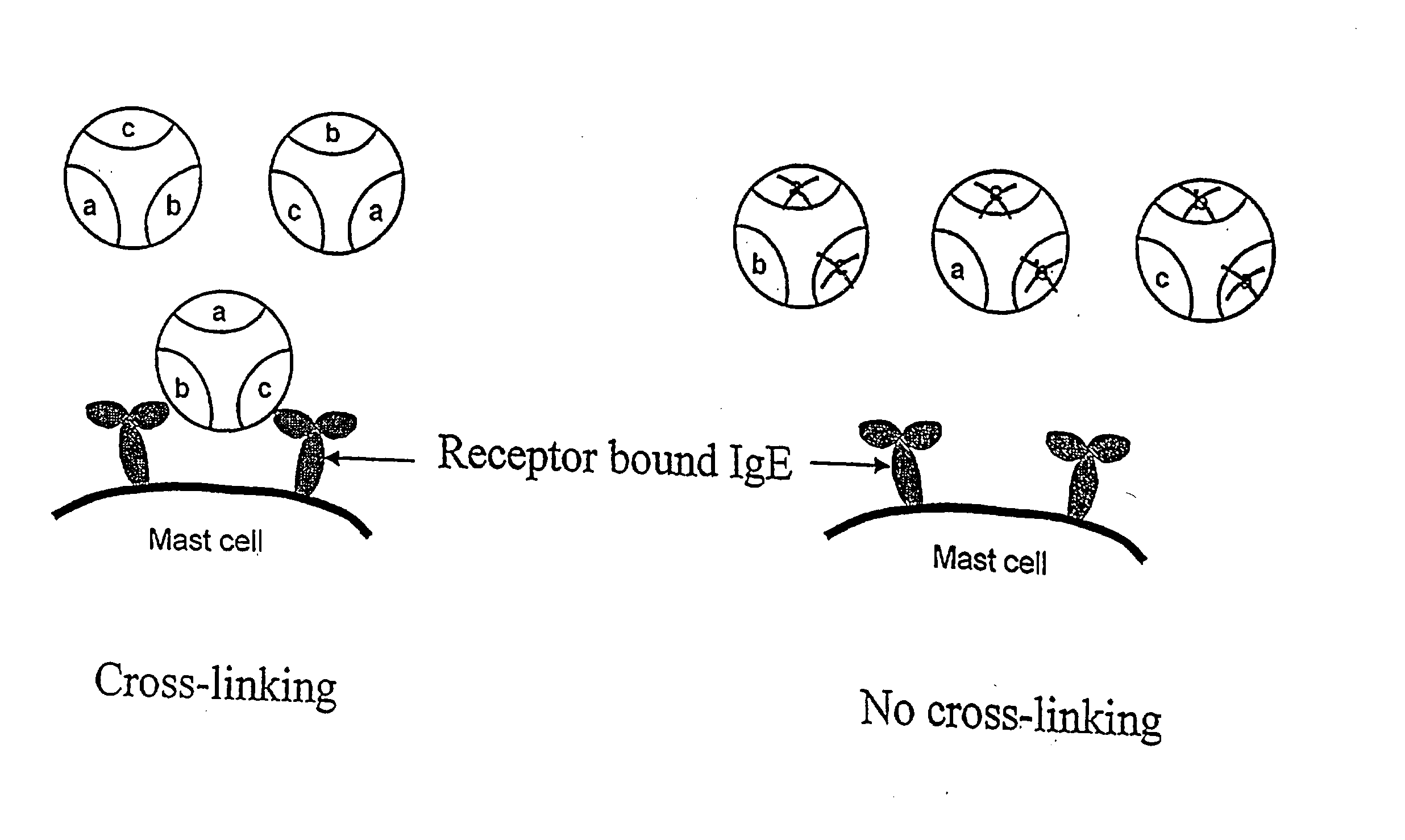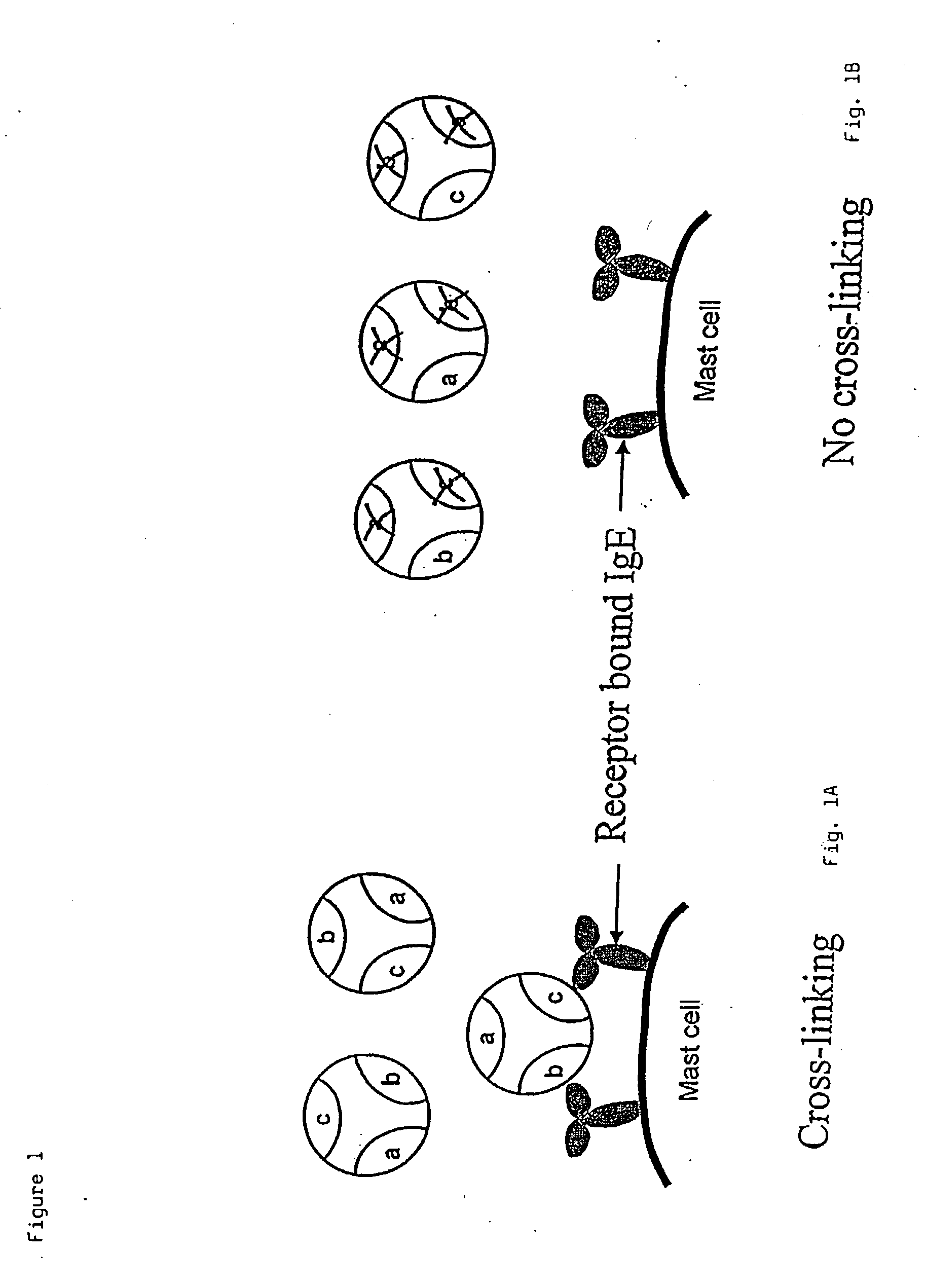Allergen mutants
a technology of allergen mutants and mutants, applied in the field of allergens, can solve the problems of life-threatening, significant pathological states, and subsequent exposure to trigger symptoms, and achieve the effect of enhancing the probability of obtaining stable mutant allergens and increasing the changes of generating stable mutants
- Summary
- Abstract
- Description
- Claims
- Application Information
AI Technical Summary
Benefits of technology
Problems solved by technology
Method used
Image
Examples
example 1
[0231] This Example describes characterisation of recombinant mutant Bet v 1 mutant allergens with diminished IgE-binding affinity. The specific mutant allergens are also disclosed in PCT / DK 01 / 00764. The following represents an illustrating example of how to prepare mutants according to the present invention.
[0232] Identification of Common Epitopes within Fagales Pollen Allergens
[0233] The major birch pollen allergen Bet v 1 shows about 90% amino acid sequence identity with major allergens from pollens of taxonomically related trees, i.e Fagales (for instance hazel and hornbeam) and birch pollen allergic patients often show clinical symptoms of allergic cross-reactivity towards these Bet v 1 homologous proteins.
[0234] Bet v 1 also shows about 50-60% sequence identity with allergic proteins present in certain fruits (for instance apple and cherry) and vegetables (for instance celery and carrot) and there are clinical evidence for allergic cross-reactivity between Bet v 1 and these f...
example 2
[0308] In Vitro Mutagenesis of Mutants According to the Present Invention
[0309] In vitro mutagenesis was performed by PCR using recombinant pMAL-c with Bet v 1 inserted as template. Preparation of recombinant mutant allergens included two PCR steps; step I and II. First, each single mutation (or several mutations if located closely together in the DNA sequence) was introduced into sequential DNA sequences of Bet v 1.2801 derivatives i.e. Bet v 1 (2595) or Bet v 1 (2628) or Bet v 1 (2733) using sense and anti-sense mutation-specific oligonucleotide primers accommodating each mutation(s) along with sense and anti-sense oligonucleotide primers accommodating either upstream or downstream neighbour mutations or the N-terminus / C-terminus of Bet v 1, respectively as schematically illustrated in FIG. 12 (I). Secondly, PCR products from PCR reaction I were purified, mixed and used as templates for an additional PCR reaction (II) with oligonucleotide primers accommodating the N-terminus and C...
example 3
[0315] Identification and Selection of Amino Acids for Substitution
[0316] The parameters of solvent accessibility and conservation degree were used to identify and select surface-exposed amino acids suitable for substitution for the allergens Bet v 1, Der p 2 and Ves v 5.
[0317] Solvent Accessibility
[0318] Solvent accessibility was calculated using the software InsightII, version 97.0 (MSI) and a probe radius of 1.4 .ANG. (Connolly surface).
[0319] Internal cavities were excluded from the analyses by filling with probes using the software PASS (Putative Active Sites with Spheres). Probes on the surface were subsequently removed manually.
[0320] Conservation
[0321] Bet v 1:
[0322] 3-D structure is based on accession number Z80104 (1bv1.pdb).
[0323] 38 other Bet v 1 sequences included in the analysis of conserved residues comprise accession numbers:
[0324] P15494=X15877=Z80106, Z80101, AJ002107, Z72429, AJ002108, Z80105, Z80100, Z80103, AJ001555, Z80102, AJ002110, Z72436, P43183=X77271, Z724...
PUM
| Property | Measurement | Unit |
|---|---|---|
| Magnetic field | aaaaa | aaaaa |
| Digital information | aaaaa | aaaaa |
| Molar density | aaaaa | aaaaa |
Abstract
Description
Claims
Application Information
 Login to View More
Login to View More - R&D
- Intellectual Property
- Life Sciences
- Materials
- Tech Scout
- Unparalleled Data Quality
- Higher Quality Content
- 60% Fewer Hallucinations
Browse by: Latest US Patents, China's latest patents, Technical Efficacy Thesaurus, Application Domain, Technology Topic, Popular Technical Reports.
© 2025 PatSnap. All rights reserved.Legal|Privacy policy|Modern Slavery Act Transparency Statement|Sitemap|About US| Contact US: help@patsnap.com



